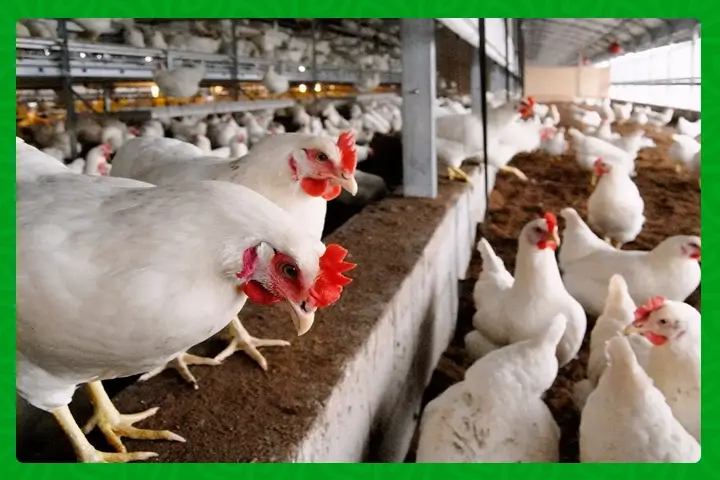
In a landmark move, the Food and Agriculture Organization (FAO) and the World Organisation for Animal Health (WOAH) have launched an ambitious ten-year global strategy aimed at combating the persistent and evolving threat of highly pathogenic avian influenza (HPAI). This comprehensive initiative, set to run from 2024 to 2033, represents a coordinated effort to address the international spread and genetic mutations of the HPAI virus, with a specific focus on the H5 goose/Guangdong (Gs/GD) lineage and its 2.3.4.4b clade.
A Decade of Strategic Action: 2024-2033
Building on the foundations of the 2007 response to the emergence of the H5N1 Gs/GD lineage in Asia, this new strategy underscores the need for a sustained and multifaceted approach to HPAI prevention and control. Central to the strategy is the One Health approach, which advocates for integrated collaboration across public health, wildlife, and environmental sectors. This multidisciplinary cooperation is deemed crucial for effectively tackling HPAI and ensuring the protection of humans, other domestic animals, wildlife, and the environment.
The One Health Approach: Integrated Collaboration
The One Health approach is pivotal to the strategy’s success, emphasizing the interconnectedness of human, animal, and environmental health. By fostering collaboration across various sectors, the strategy aims to create a holistic defense against avian influenza. This includes enhancing surveillance, improving diagnostic capabilities, and implementing effective biosecurity measures throughout the poultry value chain.
Comprehensive Scope and Focus
The strategy’s scope extends to all HPAI and zoonotic low pathogenic avian influenza (LPAI) viruses, with a particular focus on the H5N1 2.3.4.4b clade. This comprehensive coverage ensures that the strategy addresses the full spectrum of avian influenza threats, enhancing resilience against both current and emerging strains.
Key Beneficiaries and Stakeholders
The beneficiaries of this strategy are diverse, encompassing national veterinary services, wildlife and environmental organizations, public health services, regional economic communities, private sector entities, research and educational institutions, and civil society organizations. These stakeholders play a critical role in animal health, welfare, production, and zoonotic disease prevention and control. By engaging with these groups, the strategy aims to build a robust and inclusive framework for avian influenza management.
Regional and National Engagement
A crucial aspect of the strategy is its emphasis on engagement with existing One Health Platforms or the establishment of new ones at regional and national levels. This collaborative approach, in partnership with regional quadripartite partners, seeks to enhance the effectiveness of avian influenza control measures and ensure that they are tailored to the specific needs and conditions of different regions.
The South African Context: A Dire Situation
The urgency of this global strategy is underscored by the dire avian influenza situation in South Africa. Since May 2023, outbreaks of highly pathogenic H7N6 avian flu have devastated the country’s poultry industry. By September, approximately a quarter of the nation’s poultry population had been affected, with layer farms bearing the brunt of the impact. The outbreaks, which began in Mpumalanga province, quickly spread to Gauteng, Free State, Limpopo, and Northwest provinces, resulting in the culling of 9.5 million birds over the past year.
Traditionally, the industry has relied on a stamping-out policy to control outbreaks. However, this approach has proven ineffective against the H7N6 strain, as highlighted by the South African Poultry Association (SAPA). The failure of conventional methods in the face of H7N6 underscores the need for innovative and comprehensive strategies like the one being launched by the FAO and WOAH.
Looking Ahead: A Sustainable Future
The ultimate goal of the global strategy is to achieve effective HPAI prevention and management throughout the poultry value chain. This aligns with the broader objective of sustainable transformation of agrifood systems. By protecting humans, animals, and the environment, the strategy aims to foster a safer and more resilient world.
In conclusion, the FAO and WOAH’s ten-year strategy represents a critical step forward in the fight against avian influenza. Through integrated collaboration, comprehensive scope, and strategic engagement with key stakeholders, this initiative promises to enhance global preparedness and response to HPAI. As the world grapples with the challenges posed by avian influenza, this strategy offers a beacon of hope for a safer and more sustainable future.
Stay updated with the latest farming tips and agriculture industry news from Africa by subscribing to our newsletter. Don’t miss out on valuable insights and updates. Follow us on Twitter, LinkedIn, and Facebook to join our farming community and stay connected with us.


















